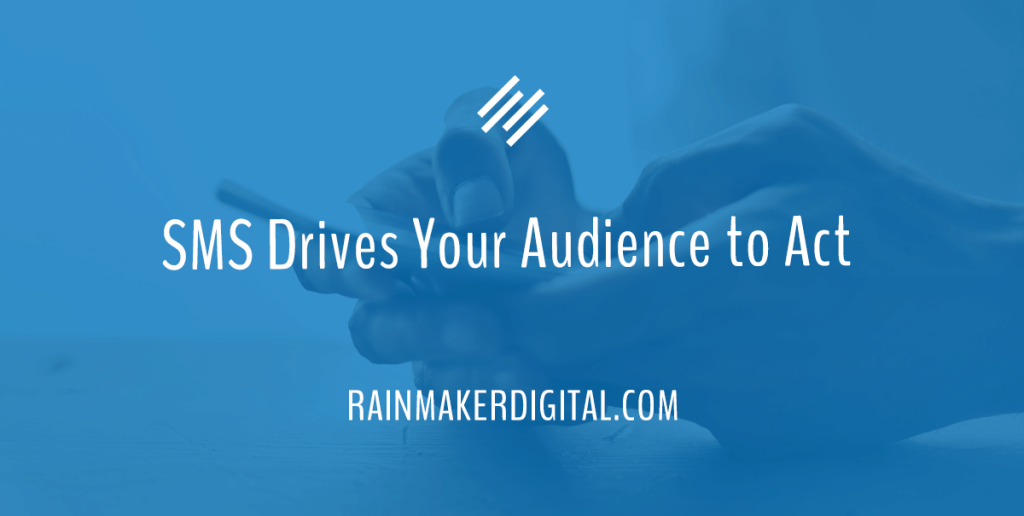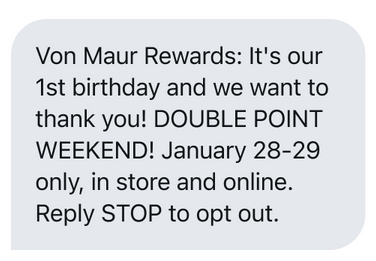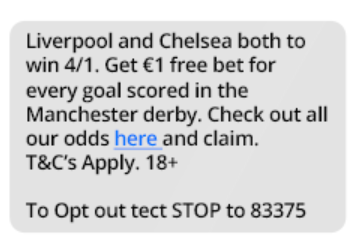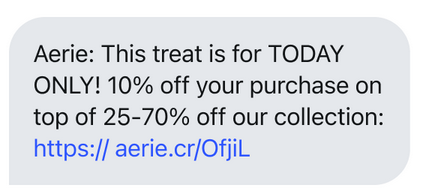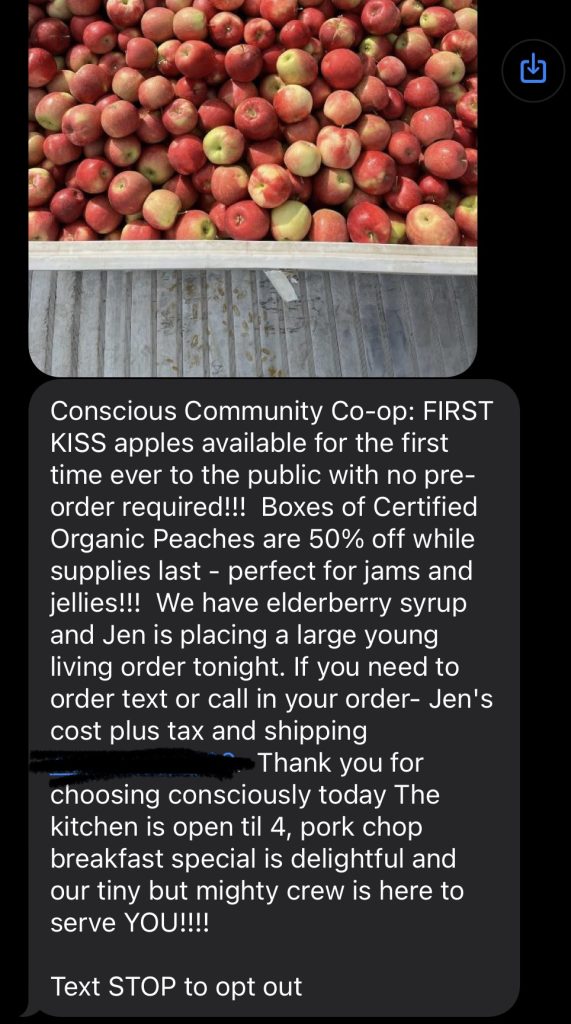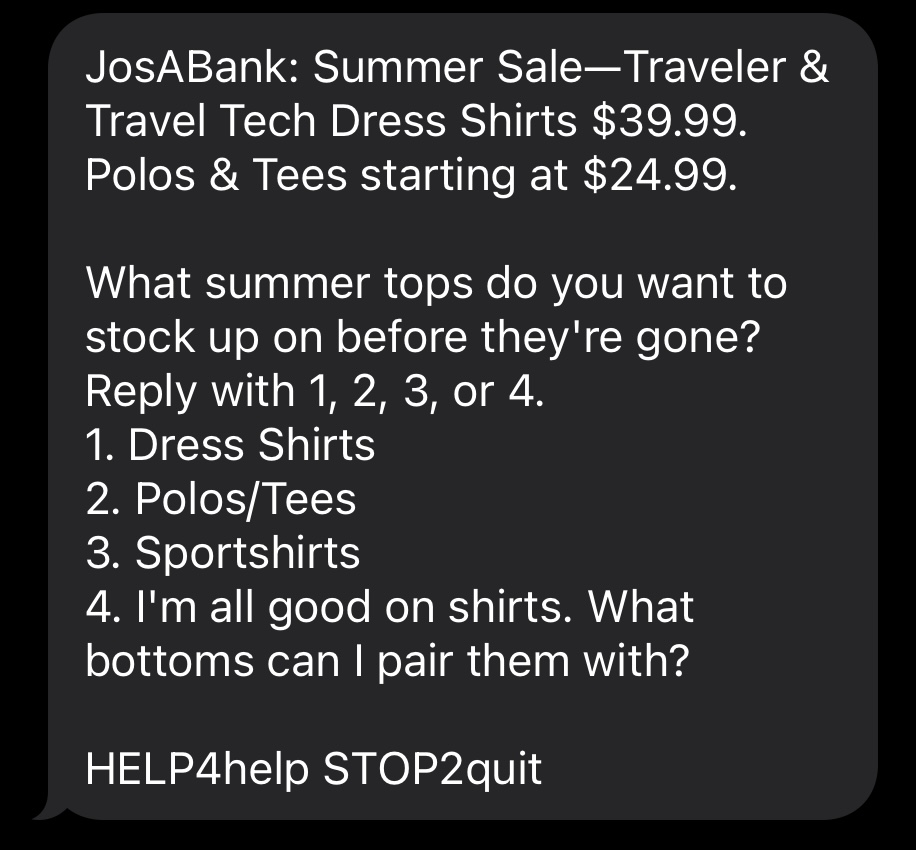Permission is powerful.
When you have someone’s permission to market directly to them, they’ve chosen to listen. You’re not just another message fighting for attention in the middle of their social media feed — you’ve been invited in.
Email is the predominant permission-based channel, but it’s not the only one. There’s another permission-based channel that has:
- Over 90% open rates.
- Strong long-term customer value.
- Excellent visibility on smartphones (which 68% of the world owns).
- And most importantly, a higher chance of engagement than email.
That channel is SMS, more commonly called “text messaging.”
I’ve watched several local businesses build an audience via SMS marketing; it’s powerful when done right. Here’s how you can use SMS to drive action.
Why SMS?
SMS has several unique characteristics that make it great for driving action.
First, it’s more personal than other marketing channels. You’re reaching out through a medium that’s still primarily a form of person-to-person communication. Unlike email, which has been clogged with promotions for years, text is personal, even intimate.
There’s a level of immediacy to text messages that emails don’t have, too. The average response time to a text message is 3 minutes. That means you’re getting someone’s full attention in the moment. Ask any salesperson — you’re a lot more likely to get someone to take action when you’re right there with them than if they walk away
SMS marketing also reaches people in the right location to take action. When you send a message, it’s not going to a computer where it may or may not be seen on arrival. It goes to a device in someone’s pocket (and quite often in their hand). Whether they’re at home or out and about, your message is going to be seen straight away.
Text marketing is personal, it reaches people wherever they are, and the audience has been trained to act immediately. These three factors combine to make SMS a powerful tool in your arsenal.
How Can You Use SMS to Drive Action?
SMS is powerful, but like any tool, it has to be used correctly. Here are a few tips:
- Follow government guidelines. At least in the USA, you can only send messages between 8 a.m. and 9 p.m. in the receiver’s local time zone, and you must include an opt-out option in every message.
- Send at least one message a month. You don’t want your audience forgetting that they signed up.
- Only send one text in a day, but vary times. Texts should feel spontaneous.
- Be conversational. This is a very personal channel. It should feel personal. Don’t be overly formal.
- Start with the brand. The very beginning of the message should include your brand to remind your audience who you are (especially if they don’t have your number saved in their phone).
- Put the benefit right after the branding. You only have 160 characters to work with, but there’s still a chance someone doesn’t read to the end if they don’t see a benefit. Front-load the benefit, then add details.
Best practices matter, but without a strategy that makes sense they won’t do much. Here are some of the strategies you can implement that are uniquely powerful when combined with SMS — and the associated actions.
Loyalty Programs
Want to connect your audience to your brand? Consider an SMS-based loyalty program. Create loyalty benefits (percent off, purchase frequency awards, advance notice on product releases) and offer them to your audience in exchange for their phone number. Customers must receive direct, tangible value every time you text. Nothing reinforces their commitment to you like you giving them a perceived benefit. In addition to planned benefits, send the occasional surprise text like a flash sale to drive extra value and give customers an unexpected gift.
Take this example, where department store Von Maur uses an SMS loyalty program to alert customers of an increased loyalty point event:
Live Events
SMS is great at driving traffic. If you have an event that’s going live soon (especially if it’s impromptu), SMS is a great way to publicize it. Gary Vaynerchuk is good at this; he lets his SMS list know whenever he’s doing a live session on social media.
Any business can follow this model, but especially local businesses, which can use it very effectively to drive foot traffic. Here are a few examples:
- Training/special guest. Have an outside expert coming in? Make sure you notify your audience.
- Brand on location. Think of something like a radio show “remote,” a trade show booth or an appearance at Comic-Con or E3. Invite your audience to come interact with the brand.
- Community live events. One good example would be a food truck or local band sending a text alert that they were at a local festival. Say where you are.
Tell your audience when you’re somewhere they wouldn’t normally expect to see you, or when you’re doing something that’s out of the ordinary.
Notifications
For some audiences, the information they receive via SMS is the benefit. Think of sports bettors — signing up for an SMS list that gives access to up-to-the-minute information on lines or injuries is important. Bonus points if that message includes a link to a place where they can adjust or place bets.
Another more serious example might be severe weather alerts. I live in Oklahoma; we’re pretty weather-aware here, but in areas that don’t have tornado sirens or the same emergency infrastructure, SMS is a perfect method to reach people in the danger zone.
Deals
Everyone wants to be part of the in-group. Dropping deals to an SMS list makes customers feel special, and it creates opportunities for unplanned purchases and extra revenue. SMS’s immediacy makes it particularly suited for short-term promotions like flash deals.
If you’re creating a deal to be sent out via SMS, here are a few tips:
- Emphasize exclusivity if it’s there. If it’s a deal you’re pushing across a variety of channels, this doesn’t apply. If it’s just for the text list, tell them. Make them feel special.
- Don’t send a deal on limited supply UNLESS you’re prepared for it. Without planning, a limited deal can be a catastrophe if you get flooded with people. If you do have a limited deal, include that in the messaging — whether that scarcity is time-based or inventory-based.
- Give them a link. If you’re local, a map pin. If you’re online, a link to the deal itself.
Offering deals via SMS is a great way to build up your customer list with permission-based connections between you and your audience.
New Products or Services
Let your audience know when you have new products arrive. My local co-op is good at this; SMS is one of the biggest ways they’ve grown their customer list. Here’s an example of a shipment of apples they recently received:
Notice: this isn’t a particular polished message (there are even typos), but it still resonated with the audience. There’s a group of local people that are on the list and show up when there’s a new product drop or a special. This co-op has built their audience and created a rapport, and their SMS messages drive action.
This is a simple, low-friction example of a new product release. And the product doesn’t have to be something physical, like in this example — it could be an app, a course, or a software update too. Don’t limit yourself.
Audience Outreach
Sometimes the action you want your audience to take isn’t buying something or showing up — it’s communication. Conversation, polls and surveys are great reasons to use SMS.
Here are some tips:
- Keep the ask simple. As little friction as possible. For a poll, have them text back a single number.
- Thank your audience. If they send a response, they should get a reply. For something like a poll, an automated response is fine, even expected. If you’re trying to drive conversation, you should either have someone on standby to manually answer texts or have an automated response that lets them know someone will reply when they see it.
- Include a REASON to engage. Don’t just say “we’re here for you” or “we want to know what you’re thinking.” Your audience needs a nudge. Usually this consists of some information up front — we’re rolling out a new feature, we have a sale going, we wanted to take the temperature of our user base.
Take this Jos A. Bank message, for example:
The recipient can reply by just typing one number and clicking send. This is an easy, low-friction way to convince your audience you care about their opinion, get consumer insight and reinforce the value of the SMS connection.
You can take outreach deeper through real two-way communication for training, consulting or support. Don’t think of SMS as an exclusively one-way communication (you to the audience). It’s more flexible than that.
Sharing Information
Emails usually link to the long content. SMS can be an effective delivery platform too. An SMS message has a maximum length of 160 characters; send short content that fits within that character limit. Break long form content into bite-size pieces and send to recipients on a regular basis. You will build a content connection through your recipient’s phone.
Information with a personal element works well here. Couples therapy (daily affirmations or encouragement), regular therapy (like Cope Notes), motivation (weight loss, self improvement) and fitness (daily workouts) are all great content to share via SMS.
What SHOULDN’T You Use SMS For?
SMS messaging is a great way to reach your audience, but it doesn’t lend itself to all types of communication.
Don’t send long form text, and don’t use SMS for complex communications. Products and services with options, details or unique deliverables are also a tough sell via SMS — think Oracle’s enterprise offerings, air conditioning cooling towers or commercial contracting.
Just like all other marketing technology, use SMS when it improves the customer experience and removes friction. “Text to buy an apple” works; “text us to configure an Apple computer” does not. SMS used poorly actually adds to complexity and friction. If anything, for more complex applications, use SMS to let a customer or prospect know that someone will call or is available to talk about their specific needs.
Drive Your Audience to Action
SMS’s benefits make it uniquely suited to driving immediate action. With these tips you can add text messaging to your marketing arsenal and start creating opportunities for your audience to act. We offer text messaging solutions for businesses large and small — don’t hesitate to reach out. Just drop us a line, anytime.
Best Regards,
David Brandon
Copywriter
Rainmaker Digital Services
